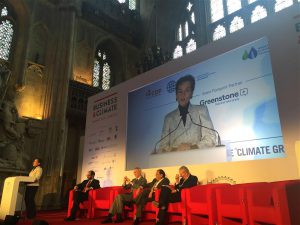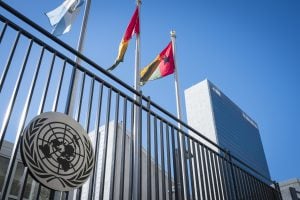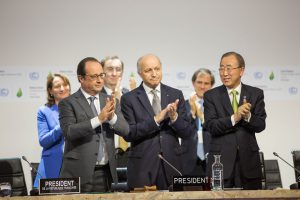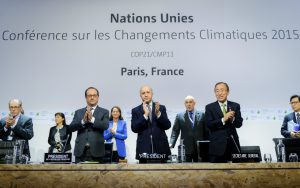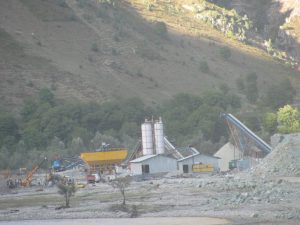The annual summit of the United Nations Framework Convention on Climate Change (UNFCCC) convenes in Marrakech, Morocco, this week in an atmosphere of hope following the Paris Agreement last year. There were also two other important agreements in 2016 – one by the International Civil Aviation Organisation (ICAO), which agreed to start cutting emissions from flights in the 2020s, and the other an amendment to the Montreal Protocol, which will see the phase-out of damaging refrigerants, also in the 2020s.
Another reason for hope is that the Paris Agreement was ratified by so many countries and has come into legal force within less than a year of being signed.
But that hope is also tempered by reality. Policymakers are being asked to reconsider the pledges made by their governments, which went into the Paris Agreement in the form of Nationally Determined Contributions, and which are going to be difficult to keep.
It has become clear that the existing pledges will be insufficient to keep the average global temperature rise since the pre-industrial age to within 2C. Meeting the 1.5C 'high ambition' goal – a surprise outcome of the Paris Agreement – will be even harder. In a full implementation scenario, the current NDCs add up to a 2.7C temperature rise.
The UNFCCC secretariat has requested the Intergovernmental Panel on Climate Change (IPCC) to come up with a series of recommendations on how countries can move towards the 1.5C goal, and the IPCC will bring out a special report on this in 2018, the same year the Paris Agreement will come up for its first review.
Primary concern
The negotiators gathered for the November 7-18 UNFCCC summit in Marrakech are primarily concerned about implementing the Paris Agreement. There is every indication that when it comes to details of implementation, the developed versus developing world wrangling over who does what will continue to dog the negotiations. Since the Paris Agreement, the negotiators have been unable to reach a decision to present to the summit for ratification. Given that the agreement is short on details, they will have to start the implementation negotiations almost from scratch.
This is especially worrying given the history of UNFCCC negotiations. The Kyoto Protocol was agreed upon in 1997 but it took another eight years before rich nations agreed on the details of their pledge to reduce greenhouse gas (GHG) emissions. The US did not ratify the protocol at all.
No window
There is no such window available to agree on the implementation details of the Paris Agreement. Firstly, climate change impacts are already evident globally in the form of reduced agricultural output; more frequent and more intense heat waves; droughts, floods and storms; rising seas, receding glaciers; melting ice caps and permafrost. Secondly, the Paris Agreement is supposed to come into force in 2020.
A related issue will lead to more bickering: what actions will be taken before 2020? The Kyoto Protocol is still going through the second phase of implementation, but most industrialised countries see it as dead, and have managed to keep pre-2020 actions largely off the agenda in Marrakech.
This is dangerous, not least because the United Nations Environment Programme has warned that GHG emissions must peak by 2020 if the world is to have any chance of keeping to a 1.5C temperature rise by the end of the century.
Financial worries
Developing countries are also worried because they are not getting the money they need to reduce emissions or deal with climate change impacts. At the Copenhagen climate summit in 2009, then US Secretary of State Hillary Clinton promised that rich countries would give US$100 billion a year from 2020 for this purpose, and would use this decade to ramp up financial support to that level.
This became an overall pledge by developed countries and has been a contentious issue since then. The OECD calculated last year that it was already providing around US$63 billion a year to poor countries in the form of climate finance. But developing countries have contested this figure strenuously, accusing the OECD of double counting and considering loans as grants.
The British and Australian governments have come up with a similar figure this year, which may lead to similar arguments. Developing countries point out that the Green Climate Fund (GCF) – the main financing arm of the UNFCCC – has little over US$10 billion in its kitty.
With negotiators from industrialised countries keeping pre-2020 actions largely off the official agenda and their counterparts from developing countries being very upset about this, host Morocco has come up with the compromise of holding a high-level “facilitative dialogue” over two days during the Marrakech summit. Some sparks may fly.
Devil in the details
Veteran climate negotiators and observers know that reaching a broad agreement between governments can be a relatively easy step because it's the details that are difficult. That is why many of the negotiators gathered in Marrakech are apprehensive about what will happen over the next two weeks. But this time they do have some successful negotiations to build upon.
The ICAO agreement to control emissions from international flights has not pleased all governments. But at least it is a start for a sector that had earlier been notoriously resistant to any change.
The other big development this year was the amendment to the Montreal Protocol. This pleased most governments because those – including India – that were opposed to an early phase-out of the refrigerant HFC were allowed to have their way. Given the amount of HFC these laggards use, the delay may not matter much and the amendment is being rightly showcased as a successful example of diplomacy that will help combat climate change.
Tackling impacts
There are many good examples of how to mitigate GHG emissions. But what about the impacts of climate change; the ways to adapt to the loss and damage that is already occurring when countries fail in their adaptation attempts?
Developing countries have had to fight developed countries to have these issues on the agenda and negotiations on these issues remain vague. There are adaptation projects going on in many developing countries but many more are needed. Especially considering the UNFCCC’s Adaptation Fund has run out of money and the GCF has so far agreed to fund only 17 adaptation projects.
There are many studies on the enormous extent of loss and damage being faced due to floods, storms and other disasters that have become more frequent and more intense due to climate change. Climate activists and developing countries – especially the poorest among them – have fought long and hard to have this issue included in the UNFCCC negotiations agenda. They managed to get the Warsaw International Mechanism for Loss and Damage adopted at the 2013 climate summit only after agreeing to drop all mention of liability – rich countries, especially the US, were particularly afraid of court cases in this area.
The mechanism will come up for review at this year’s summit, and poor nations may have to fight to retain whatever little they have achieved, let alone make any progress in this area.
Concerns over climate justice
A few days before the Marrakech summit, India’s environment minister Anil Madhav Dave reiterated the country’s longstanding demand for climate justice that rich nations should do more to combat climate change and to help poor nations because most of the GHGs polluting the atmosphere today were emitted by rich nations.
This cannot be contested in theory but has been consistently contested in practice by rich nations. In fact, many think-tanks have calculated that developing countries are actually spending a larger portion of their GDP than rich nations to control emissions and deal with climate change impacts. The issue will be mentioned volubly by some governments and observers but it is likely to remain marginal in official negotiations.

